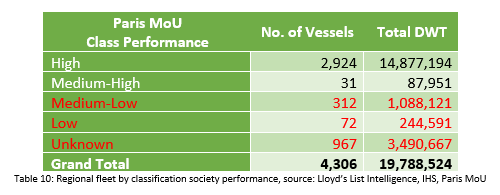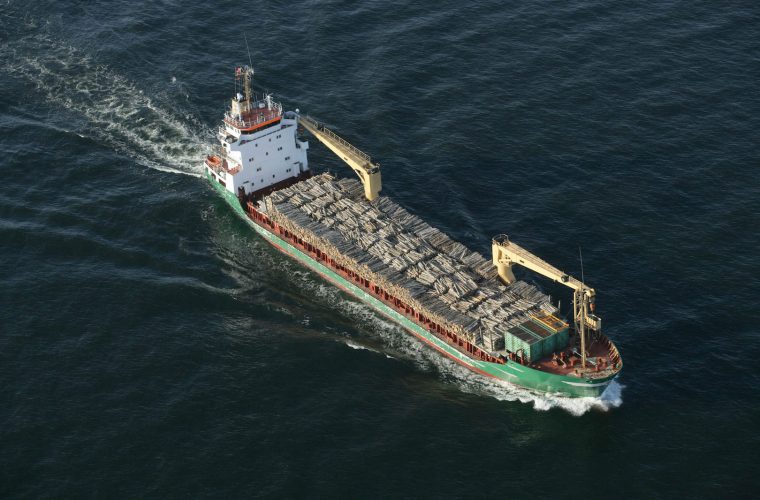Preamble
Turkish Association of Turkish Coaster Owners and Operators (KOSDER) was established on the 21st of January 2014 and has since gathered 100 individual members, representing 1,2 million DWT of Turkish owned coastal traders that are under 12.000 dwt and traditionally trade within the Black Sea – Mediterranean basin.
KOSDER is a domestic association with a regional and global vision. Although it started as a cluster-specific organisation that aims to bolster cooperation and solidarity among Turkish coaster owners and operators, it aims to cement ties with other coaster shipping organisations and become fully integrated to European short-sea shipping concept, both in terms of strategy and operational quality.
Due to such broader understanding, KOSDER sees sub-standard shipping as a serious threat to:
- Environmental safety,
- Safety of life at sea,
- Security,
- Commercial stability and sustainability.
Despite strict and necessary steps taken by powerful organisations such as International Maritime Organisation (IMO) and European Maritime Safety Agency (EMSA),
- potentially unsafe vessels
- controlled by incompetent or indifferent owners
- with complete disregard of life safety and crew dignity
create an unfair competition, cause crew grievances and pose an environmental threat with the assistance of convenient flags and classification societies.
Practices of such unprofessional organisations might also grant much sought anonymity to global terror and are thus extremely insecure.
This study aims to provide a snapshot of Black Sea, Mediterranean, Continent and Baltic coaster fleet and analyse the fleet with the perspective of assessing sub-standard shipping, determining its extent within the coaster cluster, addressing the factors significantly easing or instigating such shipping practices and proposing solutions for prevention thereof.
We, as KOSDER, request the International Maritime Organisation to take into account the contents of this report which presents a fair, unbiased view from coaster operators’ perspective and pledge our support for any existing or future studies.
Objective & General Circumstances
Being one of the few associations in its mainstay region that focusses on coasters and short-sea general cargo trade, Association of Turkish Coaster Owners and Operators (KOSDER), promotes safe, sustainable, fair and efficient coaster shipping, cooperation and achievement of scale economies among its members through younger, environmentally friendly and commercially capable fleet.
Along with other prominent shipping organisations, KOSDER considers sub-standard shipping a threat against environmental safety and safety of life at sea as well as commercial sustainability of freight markets as it not only leads to potentially dangerous practices but also creates an imbalance in terms of competitiveness.

According to statistical data spanning the entire coaster fleet, defined as 1,000-12
,000 dwt, general cargo, bulk carrier type units, owned by countries surrounding Black Sea, Mediterranean, Continent and Baltic (see Table 1, hereinafter “the region”), there are over 4,300 active units with a total capacity of 19,788,524 dwt. Among this fleet, top 5 flag states that vessels have been registered under are Antigua & Barbuda, Russia, Netherlands, Malta and Turkey (see Table 2).


Similarly, top 5 classification societies are Germanischer Lloyd (now DNV-GL), Bureau Veritas, Russian Register, Lloyds Register and Registro Italiano (see Table 3). Interestingly class societies of a significant chunk of the fleet, being over 13,5 percent, remains unidentified, possibly because of a pending class change or as the vessels have withdrawn from international trade and their previous classes are overdue. “Unidentified class” issue is separately analysed in next part of this section.


Approximately 13.6 percent (805 units and 2
,692,502 dwt) of the region’s fleet have unidentified classification societies (see Table 4). Possible causes behind a classification’s appearance as unidentified might be:
- The vessel could be switching classification society and the new society has not yet updated the international records,
- The vessel’s existing classification society might have withdrawn class,
- The vessel’s class renewal survey is overdue but the records are not properly updated,
- The vessel ceased to operate or switched to a less known class, which cannot access international database or does not update its records regularly.
Although we cross-checked each vessel across multiple databases, including one-on-one manual checks through Equasis database, we have not been able to determine classification societies of the above mentioned.
For good order, “IACS” tonnage on Table 4 refers to 12 members of the International Association of Classification Societies; “non-IACS” tonnage refers to national classification societies that are not member to IACS but also cannot be consider private venture classification societies; finally, “others” represent private venture classification societies.


In order to correctly assess the structure of unidentified class segment, we analysed the age profile as well as flag state risk profiles assigned by Paris Memorandum of Understanding (Paris MoU). Since most of the White or Grey listed flag jurisdictions only recognise IACS or high performing Non-IACS classification societies, vessels that both over 20 years and are registered under Black listed flag jurisdictions are “deduced” to have sub-standard classification (see Table 5).

Although it is reasonably safe to assume that vessels older than 20 with unidentified classification societies and high risk flags are potentially sub-standard, according to this approach, only about 617.000 dwt of the active coaster fleet can be considered sub-standard.
This argument cannot be sufficient and easily omits:
- that vessels younger than 20 could also be poorly managed,
- that vessels registered under White- or Grey-listed flag jurisdictions might also be employed in sub-standard shipping, owing to the fact that about 1,7 million dwt of coaster fleet with unidentified class is over 20 years old,
- and that Paris MoU classification society (Recognised Organisation) performance lists should be taken into consideration.
Therefore, KOSDER interprets the statistical data based on Paris MoU standards and applies a two stage filter on the regional coaster fleet to determine the potential risk, which is elaborated in the next section.
KOSDER’s Methodology of Assessing Sub-standard Shipping
According to International Maritime Organisation Resolution A.1052(27), article 1.7.10, sub-standard shipping concept is defined as:
1.7.10 Substandard ship: A ship whose hull, machinery, equipment or operational safety is substantially below the standards required by the relevant convention or whose crew is not in conformance with the safe manning document.
In line with the above and in order to correctly address and quantify sub-standard shipping, KOSDER assumes in principle that:
Any coaster;
- classed by a potentially “convenient” class society and
- registered under a “convenient” flag jurisdiction
could potentially be considered as sub-standard.
Here we need to elaborate further on the distinction of “convenient” classification societies and “convenient” flag jurisdictions as standards of a number of non-IACS classification societies that are otherwise regarded as high performing by Port State Control (PSC) regimes differ greatly from other societies.
Likewise, some open registries should be well discerned from other flag-state jurisdictions that have been criticised for lenient practices and generally black-listed by the Paris Memorandum of Understanding (Paris MoU).
According to Paris MoU and based on 2014 flag state performance 10 flag jurisdictions remain black-listed under the current port state control regime (see Table 6).

On the other hand, our analysis show that there are 61 active classification societies in the region (see Table 8), including 12 International Association of Classification Societies (IACS) members, 14 Non-IACS members and 33 private classification societies (also known as “Class of Convenience” or “CoC”).


According to Paris MoU Recognized Organisation performance lists, 17 classification societies have an excess factor lower than 0.5, suggesting a higher performance. Remaining 44 societies are either low-performing by the standards of Paris MoU, hence having a “medium-low” or “low” performance qualifier. Some classification societies that are not listed by the Paris-MoU are deemed not recognised or not encountered during inspections, hence qualifying as “unknown”.

On the basis of above and as stated previously, any coaster that is
- aged over 20,
- classed by a potentially “convenient” class society with a “medium-low”, “low” or “unknown” Paris MoU rating, and
- registered under a “black listed” jurisdiction
will be considered sub-standard.
On closer examination of the 4,300 vessels constituting the 19,788,524 dwt fleet, 657 vessels are registered under high-risk flags, corresponding to 13 percent of the total tonnage (see Table 9).

Similarly, 25 percent of vessels active in the region are registered under low-performing or unknown/unrecognised classification societies (see Table 10).



If the above two tables are merged, it is revealed that, 485 vessels accounting for about 2,000,000 dwt of the 19,788,524 dwt fleet, which corresponds to approximately 10 percent of the entire coaster fleet remain registered under risky flag jurisdictions and low-performing classification societies
, bearing a very high risk (see Table 11 & Chart № 4).
A further 866 coasters, accounting for about 2,98 million DWT, corresponding to approximately 15 percent of the coaster fleet must be closely monitored due to the fact that they are classed by low-performing classification societies despite being registered under Grey- or White-listed flags.
Conclusions
According to analysis conducted on statistical data spanning 1,000-12,000 dwt, general cargo, bulk carrier type units (coasters), owned by countries surrounding Black Sea, Mediterranean, Continent and Baltic:
- 485 coasters accounting for about 2,000,000 dwt of the 19,788,524 dwt fleet, which corresponds to approximately 10 percent of the entire coaster fleet remain registered under risky flag jurisdictions and low-performing classification societies thus bearing a very high risk.
- A further 866 coasters, accounting for about 2,98 million DWT, corresponding to approximately 15 percent of the coaster fleet must be closely monitored.
- Regardless of their flag state, vessels classed by low-performing or unknown classification societies threaten sustainability of coaster trade for the following reasons:
- They operate under sub-standard or near-sub-standard conditions,
- They are potentially unsafe and unfit for international trade as they are not subject to strict classification rules imposed by IACS member classification societies or high-performing non-IACS classification societies such as Turkish Lloyd or Hellenic Register of Shipping,
- They create unfair competition as their documents can be easily obtained, effortlessly maintained.
As Turkish Association of Turkish Coaster Owners and Operators (KOSDER) we request IMO to address these problems and introduce stricter controls over classification societies.



